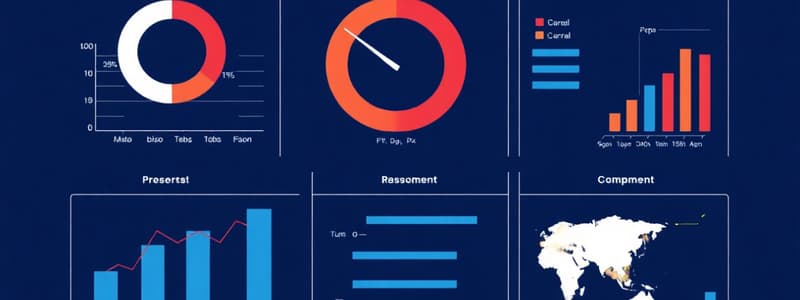Podcast
Questions and Answers
What is the primary purpose of progress reports?
What is the primary purpose of progress reports?
- To provide a detailed analysis of financial data
- To communicate social interactions among stakeholders
- To monitor the progress of a project or task (correct)
- To evaluate employee performance
Which section of a progress report is best for detailing the actual work completed versus planned work?
Which section of a progress report is best for detailing the actual work completed versus planned work?
- Facts (correct)
- Introduction
- Conclusion
- Recommendation
What type of information would progress report readers primarily focus on?
What type of information would progress report readers primarily focus on?
- Plans for future actions and potential problems (correct)
- The overall financial impact of the project
- Detailed historical data about past projects
- Personal achievements of team members
How should the discussion section of a progress report be organized for clarity?
How should the discussion section of a progress report be organized for clarity?
What is the main function of the recommendations section in a progress report?
What is the main function of the recommendations section in a progress report?
In a smaller progress report, what element might be less essential?
In a smaller progress report, what element might be less essential?
Which of the following is NOT typically included in a progress report's superstructure?
Which of the following is NOT typically included in a progress report's superstructure?
What should be highlighted in the Facts section of a progress report?
What should be highlighted in the Facts section of a progress report?
Flashcards
Progress Report
Progress Report
A document outlining the progress of a project or task, covering completed work, remaining work, and any problems.
Progress Report Readers
Progress Report Readers
The primary audience for a progress report, focused on the future of the project.
Progress Report Superstructure
Progress Report Superstructure
The standardized organization of a progress report, consisting of five key parts.
Progress Report Introduction
Progress Report Introduction
Signup and view all the flashcards
Progress Report Facts
Progress Report Facts
Signup and view all the flashcards
Progress Report Discussion
Progress Report Discussion
Signup and view all the flashcards
Progress Report Conclusion
Progress Report Conclusion
Signup and view all the flashcards
Progress Report Recommendations
Progress Report Recommendations
Signup and view all the flashcards
Study Notes
Progress Reports
- Progress reports monitor project or task progress.
- They update on completed work, remaining work, and encountered issues.
- Progress reports keep stakeholders informed and ensure accountability.
- Reports are for individual and multiple projects.
- Employers request progress reports to monitor employee activities.
Progress Report Readers
- Progress report readers prioritize future implications.
- They use the data for future planning, potential problem anticipation, and necessary adjustments.
- Readers might also need information about previous accomplishments.
Progress Report Superstructure
- A progress report has five key elements:
- Introduction: Clearly identifies the project or task.
- Facts: Details planned work, actual work, and upcoming work.
- Highlight discrepancies between planned and actual work.
- Discussion: Explains facts, provides context and explanations about completed work, problems, and challenges.
- Keep the discussion concise and relevant.
- Conclusion: Summarizes overall progress.
- Recommendations: Suggests solutions for issues and challenges.
Using the Structure
- Organize the discussion section by time periods, starting with past work followed by future expectations.
- Emphasize critical findings and problems, regardless of the source (author or others).
- A conclusion is optional in smaller reports, but enhances understanding in complex reports with many projects.
- Include recommendations to address reported problems and issues.
Studying That Suits You
Use AI to generate personalized quizzes and flashcards to suit your learning preferences.




